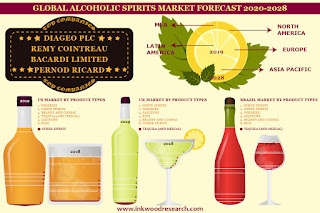

Neill remarks, “the lines between both sectors get blurred. As soft drinks companies face increasing scrutiny from sugar activists, for example, the health and wellness movement offers an interesting avenue into drinking occasions that may normally cater primarily to alcoholic beverages. The intersection of the no- and low- alcoholic category and the wider drinks industry, such as soft drinks, creates an interesting source of category innovation as well. This has been a key barrier in non-alcohol wine becoming a mainstream alternative to date.”

Mettyear adds, “as we begin seeing more wine producers investing in meeting the growing demand for low- and no- alcohol, their main challenge will be in producing a wine alternative that delivers on taste. Others, many of whom eye the commercial opportunity, are keen for non-alcoholic wine to be considered equal to its alcoholic counterpart, with some even eager for it to be subject to the same regulations and controls.” “Many traditional wine producers shun dealcoholized wine from even being associated with the wine category. “The concept of non-alcoholic wine is an interesting source of tension within the industry,” remarks Dan Mettyear, IWSR’s Head of Wine. While beer and spirits companies are charging ahead in this space, wine has been largely left behind. Instagrammability always helps too, especially with younger LDA consumers.” If the on-premise can deliver a quality non-alcoholic drink, with all the flair, serve, garnishes, look and taste of a cocktail, they then have the potential to charge cocktail-equivalent prices as well. Consumers want the interest, excitement and textures of a quality cocktail they aren’t interested in a simple mix of juice and soda. Neill adds, “beyond beer, the on-trade also lags in offering quality mocktails.

Diageo-owned Distill Ventures kicked off 2020 by making a minority investment in US-based Ritual Zero Proof, which claims to be the first American company to produce a spirit alternative that smells and tastes like its alcoholic counterpart. While Seedlip created the alcohol-free spirit category, other products have since entered the market, such as Pernod Ricard’s launch of Ceder’s, and William Grant & Sons’ launch of Atopia. Outside of beer, spirits producers are slowly catching up to the pace of innovation set by brewers. For example, at Brewdog’s UK-based pub, Brewdog AF, claimed to be the world’s first alcohol-free pub, there are multiple stouts, IPAs and fruit flavoured beers on offer.” Neill notes, “the on-premise holds big opportunities for these new products, and operators should look into expanding their on-trade offering beyond a single non-alcoholic option. However, this is currently the fastest growing segment in the UK, and IWSR analysts forecast that it will grow by 6% per annum on average by 2023 (as opposed to the total beer market, which is forecast to be flat to slightly declining).Īs product innovation propels sustained interest in the category, Emily Neill, IWSR’s COO of Research, advises that the real potential of this segment’s growth will be driven from the on-premise. In the UK, for example, low and no-alcohol beer accounts for 2% of the total beer market. While this market is seeing increased investment and consolidation, it has not quite hit widespread adoption yet. Product innovation has come from brewers such as Anheuser-Busch, who launched their fruit flavoured non-alcoholic Hoegaarden in the US, and Molson Coor, whose introducing of Coors Edge claims to have the lowest calorie and carbohydrate content in its category. To date, beer has largely been driving the category forward, with brewers spending the past few years investing in new brewing techniques and product innovation to continually improve taste and variety. Consumer interest in low- and no- alcohol products has been gaining pace over the past few years, especially as part of the larger health and wellness movement.


 0 kommentar(er)
0 kommentar(er)
